In today’s fast-paced, digital world, email has become an indispensable tool for professional communication. Whether you’re a seasoned executive or just starting your career, the ability to craft well-written, professional emails is a skill that can set you apart from your peers and contribute to your success. As someone who has spent years honing email communication skills, I understand the importance of making a positive impression through every message you send.
Crafting a professional email involves more than just typing out your thoughts and hitting send. It requires a thoughtful approach that takes into account your audience, purpose, and tone. From the subject line to the closing, every element of your email should be carefully considered and optimized for maximum impact. In this comprehensive guide, I will share proven tips and techniques for mastering the art of professional email communication, helping you to build stronger relationships, communicate more effectively, and achieve your professional goals.
Key Elements of a Professional Email
Creating a professional email involves several key components that work together to convey your message clearly and respectfully. Here are the essential elements you should focus on:
- Professional Signature: Includes your name, title, company, and contact information for credibility.
- Clear and Concise Subject Line: Accurately reflects the content of your message and sets the recipient’s expectations.
- Formal Greeting: A respectful salutation that acknowledges the recipient appropriately.
- Well-Structured Content: Organized into clear, easy-to-read paragraphs with relevant information.
- Polite Closing: Reinforces your professionalism and encourages further communication.

Advanced Strategies: Hidden Gems for Sounding Professional in Emails
While the fundamental principles of professional email writing are widely recognized, there are several lesser-known strategies that can significantly enhance the professionalism and effectiveness of your emails. Here are five hidden gem strategies to consider:
1. Use the “Sandwich” Approach for Feedback
When providing feedback or addressing issues, use the “sandwich” method: start with a positive comment, address the issue constructively, and end with another positive remark. This technique softens criticism and maintains professionalism.
- Potential Effectiveness: High
- Level of Obscurity: Moderate
- Ease of Implementation: Easy
- Uniqueness: Moderate
By framing feedback in this manner, you create a balanced and respectful tone, making the recipient more receptive to your message. For example, instead of saying, “Your report was lacking in detail,” you could say, “I appreciate the effort you put into the report. To make it even more impactful, adding more detailed analysis would be beneficial. Overall, great job on meeting the deadline.”
2. Incorporate Formal Language Variations
Instead of using casual phrases like “I think,” opt for more formal alternatives such as “I believe” or “It is my opinion that.” This subtle change can elevate the professionalism of your tone.
- Potential Effectiveness: High
- Level of Obscurity: Moderate
- Ease of Implementation: Easy
- Uniqueness: High
Using formal language variations demonstrates respect and seriousness, which can enhance your credibility in professional settings. For instance, replacing “I think we should consider” with “I believe we should consider” can make your suggestions sound more authoritative and well-considered.
3. Utilize Active Voice
Using active voice instead of passive voice makes your emails clearer and more direct. For example, say “I will send the report” instead of “The report will be sent by me.” This approach conveys confidence and decisiveness.
- Potential Effectiveness: High
- Level of Obscurity: Low
- Ease of Implementation: Easy
- Uniqueness: Moderate
Active voice creates a more engaging and assertive tone, which is essential for professional communication. It also helps in reducing ambiguity and making your intentions clear. For example, “Our team will complete the project by Friday” is more direct and clear than “The project will be completed by our team by Friday.”
4. Use Transitional Phrases for Clarity
Incorporate transitional phrases (e.g., “Furthermore,” “Additionally,” “On the other hand”) to guide readers through your email logically. This enhances clarity and professionalism in your writing.
- Potential Effectiveness: Moderate
- Level of Obscurity: High
- Ease of Implementation: Easy
- Uniqueness: High
Transitional phrases help in structuring your email content, making it easier for the recipient to follow your arguments and understand your message. For example, “Additionally, we need to address the budget constraints,” or “On the other hand, implementing this change could streamline our processes.”
5. Proofread for Tone and Clarity
Before sending an email, take a moment to read it aloud to catch any awkward phrasing or unclear statements. This practice helps ensure that your message sounds professional and clear.
- Potential Effectiveness: High
- Level of Obscurity: Low
- Ease of Implementation: Easy
- Uniqueness: Low
Reading your email aloud can help you identify areas where the tone may be off or where clarity can be improved, ensuring that your communication is both professional and effective. This step is crucial in avoiding misunderstandings and maintaining a respectful and courteous tone throughout your correspondence.
Upgrade Your Email Marketing with AI Personalization!
Best Practices for Email Communication
Implementing best practices in your email communication can significantly enhance your professionalism and the effectiveness of your messages. Here are some key practices to follow:
1. Clear and Concise Subject Lines
- Accurately reflect the content of your email.
- Keep it short and to the point, ideally under 50 characters.
- Use action-oriented language to engage the recipient.
A well-crafted subject line is the first step in sounding professional. It not only informs the recipient about the email’s content but also encourages them to open and read it. For example, instead of a vague subject like “Meeting,” use something more specific like “Project Update Meeting – May 5th.”
2. Formal and Personalized Greetings
- Use the recipient’s name and title when possible.
- Avoid generic greetings like “Dear Sir/Madam.”
- Ensure consistency in addressing multiple recipients.
Personalizing your greetings shows respect and attention to detail. Using the recipient’s name, along with their appropriate title, sets a professional tone from the very beginning. For example, “Dear Dr. Smith,” or “Hello Ms. Johnson,” are both appropriate and respectful greetings.
3. Structured and Error-Free Content
- Organize your email into clear paragraphs and sections.
- Use bullet points or numbered lists for easy readability.
- Proofread for spelling, grammar, and punctuation errors.
Well-structured content enhances readability and ensures that your message is conveyed effectively. Breaking down information into paragraphs and using bullet points can make your email easier to scan and understand. Additionally, ensuring that your email is free from spelling and grammatical errors upholds your professionalism and credibility.
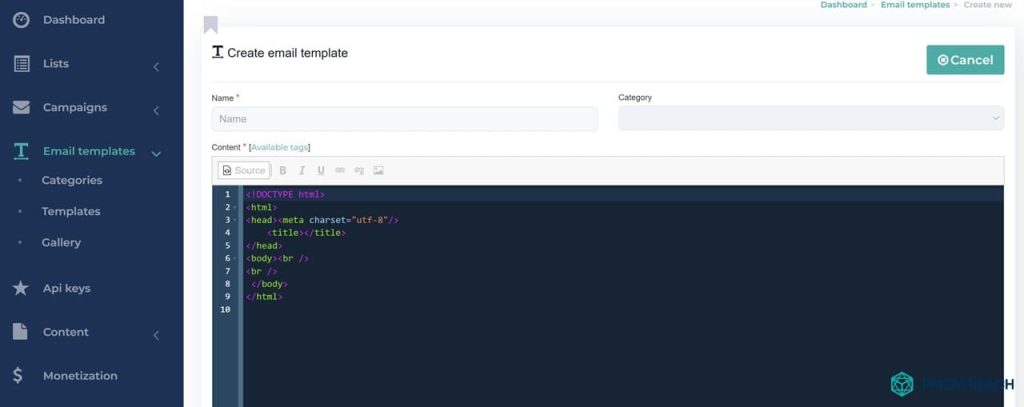
4. Polite and Professional Closings
- Use appropriate closing phrases like “Best regards,” “Sincerely,” or “Thank you.”
- Include your full name and contact information.
- Avoid overly casual sign-offs like “Cheers” or “Later.”
Ending your email with a polite closing reinforces your professionalism and leaves a positive impression. A well-formatted signature that includes your name, title, company, and contact information makes it easy for recipients to reach out to you if needed.
5. Limit Use of Jargon and Slang
- Use industry-specific terms only when necessary.
- Avoid slang or overly casual language.
- Strive for clarity and simplicity in your language.
While some industry-specific jargon can be useful, overusing it can alienate recipients who may not be familiar with the terms. Strive for clarity by using simpler language whenever possible. This ensures that your message is accessible to a broader audience and avoids confusion.
6. Be Mindful of Tone in Written Communication
- Avoid overly casual language or humor that could be misinterpreted.
- Maintain a respectful and neutral tone.
- Consider the recipient’s perspective and adjust your tone accordingly.
Since emails lack non-verbal cues, it’s crucial to be mindful of how your tone may be interpreted. Aim for a neutral, respectful tone that conveys your message clearly without offending or alienating the recipient. Avoid sarcasm or humor unless you are certain it will be well-received.
7. Use Clear Call-to-Actions (CTAs)
- Be specific about what you want the recipient to do.
- Use actionable language like “Please review the attached report by Friday.”
- Highlight the CTA to make it stand out in the email.
Including clear and specific CTAs helps guide the recipient towards the desired action. Whether it’s requesting a meeting, asking for feedback, or directing them to a resource, a well-defined CTA ensures that your email achieves its intended purpose.
8. Maintain Consistent Branding
- Use company colors and logos in your email signature.
- Ensure that your email design aligns with your brand guidelines.
- Maintain a consistent tone and style across all communications.
Consistency in branding reinforces your company’s identity and makes your emails easily recognizable. This includes using your company’s colors, logos, and maintaining a uniform tone and style in all your communications.
9. Be Concise and To the Point
- Avoid unnecessary filler words and lengthy explanations.
- Focus on the main purpose of your email.
- Use bullet points to highlight key information.
Keeping your emails concise ensures that your message is clear and that the recipient can quickly grasp the key points. Long, rambling emails can be overwhelming and may lead to important details being overlooked.
10. Use Proper Formatting
- Choose a clear, legible font like Arial, Calibri, or Times New Roman.
- Use a standard font size (10-12 points) for readability.
- Avoid using multiple fonts, colors, or sizes within the same email.
Proper formatting enhances the readability of your emails and ensures that your message is presented in a professional manner. Consistent use of fonts, sizes, and colors helps maintain a clean and organized appearance.
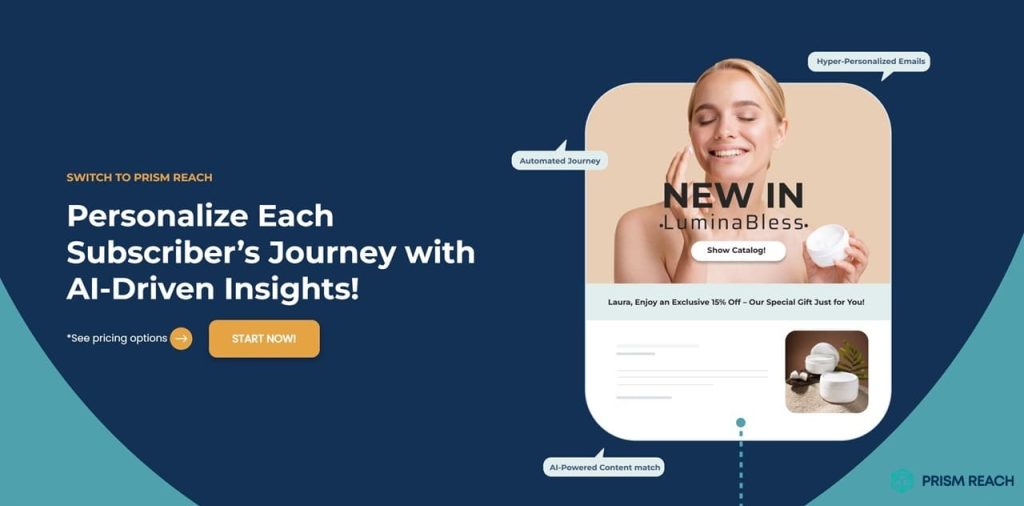
Enhancing Your Email Communication with Prism Reach
While mastering the fundamentals of professional email communication is essential, leveraging advanced tools can take your efforts to the next level. Prism Reach is an innovative AI-powered SaaS solution designed to enhance the effectiveness of email marketing campaigns through deep personalization. Here’s how Prism Reach can help you sound more professional in your emails:
Key Benefits of Prism Reach
- Enhanced Personalization for Better Engagement: Prism Reach uses sophisticated AI algorithms to customize every aspect of your emails based on recipient behavior and preferences, resulting in more engaging and relevant communications.
- Automated Proofreading and Tone Adjustment: The platform’s AI-driven tools help ensure your emails are error-free and maintain a professional tone, reducing the risk of miscommunication.
- Analytics and Insights to Refine Communication Strategies: Prism Reach provides detailed analytics on email performance, helping you understand what works and where improvements are needed to enhance your professional communication.
Prism Reach’s Advanced Features
Prism Reach offers a suite of features designed to streamline and enhance your email communication:
- AI-Powered Personalization: Clusters content into relevant categories and creates detailed user avatars for highly personalized email content.
- Seamless Setup and Integration: Quick integration within minutes with one-click uploads for existing contact lists.
- Dynamic Content Selection: AI determines the most relevant content for each recipient, ensuring your emails are tailored and engaging.
- Automated Proofreading: Identifies and corrects spelling, grammar, and punctuation errors to maintain professionalism.
- Tone Analysis: Assesses the tone of your emails and provides suggestions to ensure your message is clear and respectful.
- Comprehensive Analytics: Tracks email performance metrics, offering insights into open rates, click-through rates, and overall engagement.
Streamlined User Journey with Prism Reach
The typical user journey with Prism Reach involves a streamlined process where you set up your account, import your contact list, and begin crafting personalized emails with the help of AI-driven tools. Subscribers receive tailored messages that resonate with their preferences and behaviors, enhancing their experience and increasing the likelihood of positive interactions.
Compliance and Data Privacy
Prism Reach places a strong emphasis on GDPR compliance and hosts data within secure, European servers, adhering to the highest standards of data protection. This focus on privacy is crucial for building trust with your recipients and ensuring that your email communications comply with international regulations.
Future Prospects
Looking ahead, Prism Reach aims to expand its capabilities by integrating more advanced AI features and expanding into new sectors such as eCommerce. The company is committed to continuous improvement, ensuring that its solutions remain at the forefront of email marketing technology and innovation.
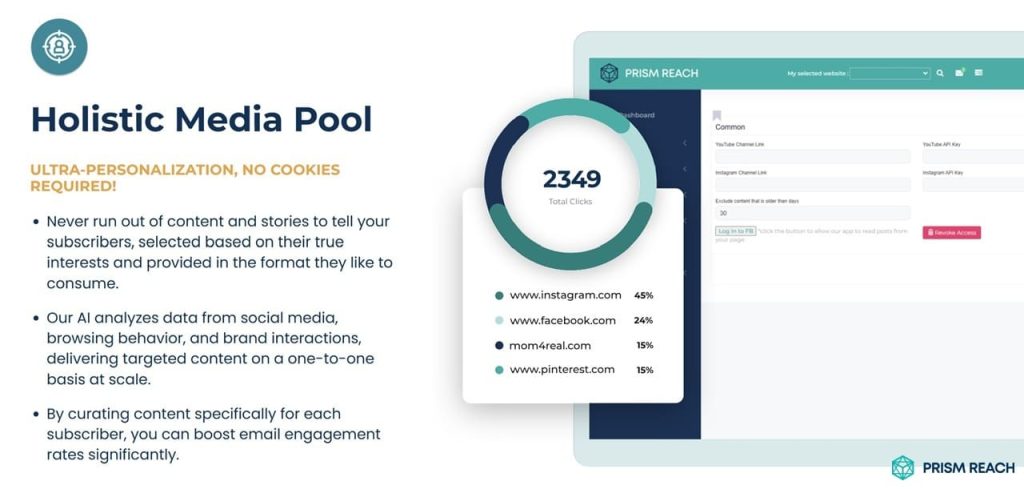
Best Practices for Email Communication
Optimizing your email communication involves a combination of adhering to best practices and implementing advanced strategies. Here are some actionable tips to help you master professional email writing:
1. Choose the Right Subject Line
- Be specific and descriptive.
- Keep it under 50 characters.
- Use action verbs to create urgency.
A well-crafted subject line is the first step in sounding professional. It not only informs the recipient about the email’s content but also encourages them to open and read it. For example, instead of a vague subject like “Meeting,” use something more specific like “Project Update Meeting – May 5th.”
2. Implement Formal and Personalized Greetings
- Use the recipient’s name and title when possible.
- Avoid generic greetings like “Dear Sir/Madam.”
- Ensure consistency in addressing multiple recipients.
Personalizing your greetings shows respect and attention to detail. Using the recipient’s name, along with their appropriate title, sets a professional tone from the very beginning. For example, “Dear Dr. Smith,” or “Hello Ms. Johnson,” are both appropriate and respectful greetings.
3. Maintain Clear and Concise Content
- Organize information into short paragraphs.
- Use bullet points or numbered lists for clarity.
- Avoid unnecessary jargon and keep language simple.
Well-structured content enhances readability and ensures that your message is conveyed effectively. Breaking down information into paragraphs and using bullet points can make your email easier to scan and understand. Additionally, ensuring that your email is free from spelling and grammatical errors upholds your professionalism and credibility.
4. Polite and Professional Closings
- Use appropriate closing phrases like “Best regards,” “Sincerely,” or “Thank you.”
- Include your full name and contact information.
- Avoid overly casual sign-offs like “Cheers” or “Later.”
Ending your email with a polite closing reinforces your professionalism and leaves a positive impression. A well-formatted signature that includes your name, title, company, and contact information makes it easy for recipients to reach out to you if needed.
5. Limit Use of Jargon and Slang
- Use industry-specific terms only when necessary.
- Avoid slang or overly casual language.
- Strive for clarity and simplicity in your language.
While some industry-specific jargon can be useful, overusing it can alienate recipients who may not be familiar with the terms. Strive for clarity by using simpler language whenever possible. This ensures that your message is accessible to a broader audience and avoids confusion.
6. Be Mindful of Tone in Written Communication
- Avoid overly casual language or humor that could be misinterpreted.
- Maintain a respectful and neutral tone.
- Consider the recipient’s perspective and adjust your tone accordingly.
Since emails lack non-verbal cues, it’s crucial to be mindful of how your tone may be interpreted. Aim for a neutral, respectful tone that conveys your message clearly without offending or alienating the recipient. Avoid sarcasm or humor unless you are certain it will be well-received.
7. Use Clear Call-to-Actions (CTAs)
- Be specific about what you want the recipient to do.
- Use actionable language like “Please review the attached report by Friday.”
- Highlight the CTA to make it stand out in the email.
Including clear and specific CTAs helps guide the recipient towards the desired action. Whether it’s requesting a meeting, asking for feedback, or directing them to a resource, a well-defined CTA ensures that your email achieves its intended purpose.
8. Maintain Consistent Branding
- Use company colors and logos in your email signature.
- Ensure that your email design aligns with your brand guidelines.
- Maintain a consistent tone and style across all communications.
Consistency in branding reinforces your company’s identity and makes your emails easily recognizable. This includes using your company’s colors, logos, and maintaining a uniform tone and style in all your communications.
9. Be Concise and To the Point
- Avoid unnecessary filler words and lengthy explanations.
- Focus on the main purpose of your email.
- Use bullet points to highlight key information.
Keeping your emails concise ensures that your message is clear and that the recipient can quickly grasp the key points. Long, rambling emails can be overwhelming and may lead to important details being overlooked.
10. Use Proper Formatting
- Choose a clear, legible font like Arial, Calibri, or Times New Roman.
- Use a standard font size (10-12 points) for readability.
- Avoid using multiple fonts, colors, or sizes within the same email.
Proper formatting enhances the readability of your emails and ensures that your message is presented in a professional manner. Consistent use of fonts, sizes, and colors helps maintain a clean and organized appearance.
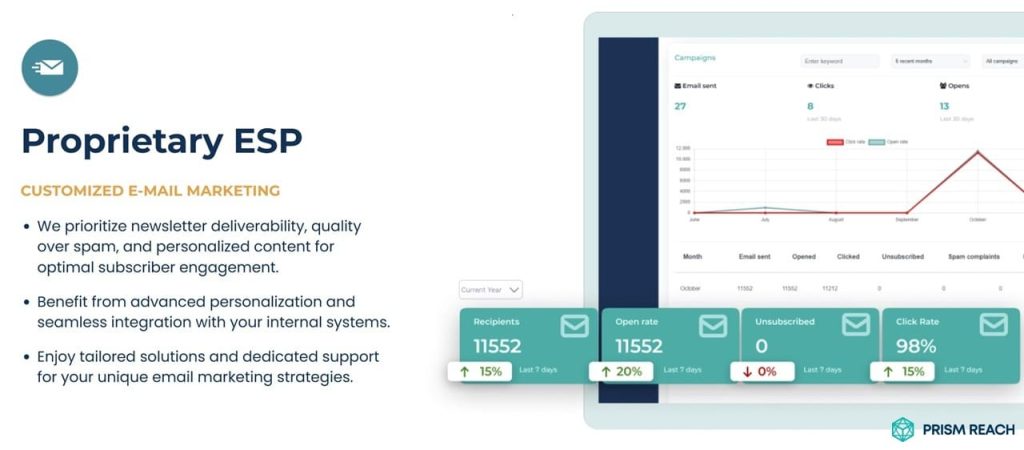
Enhancing Your Email Communication with Prism Reach
While mastering the fundamentals of professional email communication is essential, leveraging advanced tools can take your efforts to the next level. Prism Reach is an innovative AI-powered SaaS solution designed to enhance the effectiveness of email marketing campaigns through deep personalization. Here’s how Prism Reach can help you sound more professional in your emails:
Key Benefits of Prism Reach
- Enhanced Personalization for Better Engagement: Prism Reach uses sophisticated AI algorithms to customize every aspect of your emails based on recipient behavior and preferences, resulting in more engaging and relevant communications.
- Automated Proofreading and Tone Adjustment: The platform’s AI-driven tools help ensure your emails are error-free and maintain a professional tone, reducing the risk of miscommunication.
- Analytics and Insights to Refine Communication Strategies: Prism Reach provides detailed analytics on email performance, helping you understand what works and where improvements are needed to enhance your professional communication.
Prism Reach’s Advanced Features
Prism Reach offers a suite of features designed to streamline and enhance your email communication:
- AI-Powered Personalization: Clusters content into relevant categories and creates detailed user avatars for highly personalized email content.
- Seamless Setup and Integration: Quick integration within minutes with one-click uploads for existing contact lists.
- Dynamic Content Selection: AI determines the most relevant content for each recipient, ensuring your emails are tailored and engaging.
- Automated Proofreading: Identifies and corrects spelling, grammar, and punctuation errors to maintain professionalism.
- Tone Analysis: Assesses the tone of your emails and provides suggestions to ensure your message is clear and respectful.
- Comprehensive Analytics: Tracks email performance metrics, offering insights into open rates, click-through rates, and overall engagement.
Streamlined User Journey with Prism Reach
The typical user journey with Prism Reach involves a streamlined process where you set up your account, import your contact list, and begin crafting personalized emails with the help of AI-driven tools. Subscribers receive tailored messages that resonate with their preferences and behaviors, enhancing their experience and increasing the likelihood of positive interactions.
Compliance and Data Privacy
Prism Reach places a strong emphasis on GDPR compliance and hosts data within secure, European servers, adhering to the highest standards of data protection. This focus on privacy is crucial for building trust with your recipients and ensuring that your email communications comply with international regulations.
Future Prospects
Looking ahead, Prism Reach aims to expand its capabilities by integrating more advanced AI features and expanding into new sectors such as eCommerce. The company is committed to continuous improvement, ensuring that its solutions remain at the forefront of email marketing technology and innovation.
Benefits of Using Prism Reach for Professional Email Communication
Incorporating Prism Reach into your email marketing strategy offers several benefits that align perfectly with the goal of sounding professional:
- Increased Engagement: With enhanced personalization, your emails resonate more with recipients, leading to higher open and click-through rates.
- Higher Revenue: Tailored content and targeted advertising can lead to better monetization of your email campaigns.
- Improved Productivity: Automation features reduce the time and effort needed to create and manage professional email campaigns.
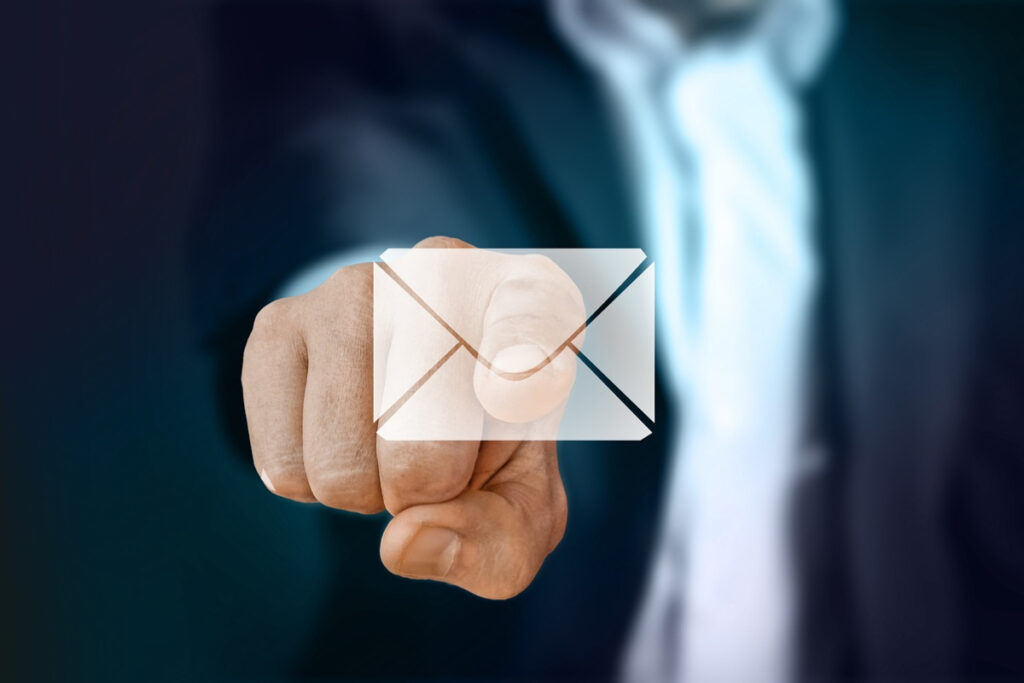
Conclusion
Mastering the art of professional email communication is a critical skill that can have a profound impact on your career success and professional relationships. By following the tips, techniques, and best practices outlined in this comprehensive guide, you can craft emails that are clear, concise, compelling, and reflective of your high standards and attention to detail.
Remember to start with a strong, informative subject line that accurately reflects the content of your message. Use a formal, respectful greeting that sets a positive tone and acknowledges your recipient. Keep your email body focused, well-structured, and error-free, using short paragraphs, bullet points, and clear language to convey your message effectively.
When it comes to using the hidden gem strategies like the “sandwich” approach, incorporating formal language variations, utilizing active voice, using transitional phrases for clarity, and proofreading for tone and clarity, you can significantly enhance the professionalism of your emails.
Additionally, leveraging tools like Prism Reach can streamline your email communication efforts, providing personalized and engaging content that resonates with your audience. These AI-powered features not only save time but also ensure that your emails maintain a high level of professionalism and effectiveness.
By combining the proven strategies outlined in this guide with the cutting-edge capabilities of AI-powered tools, you can become a master of professional email communication, building stronger relationships, driving better results, and achieving greater success in all your professional endeavors.